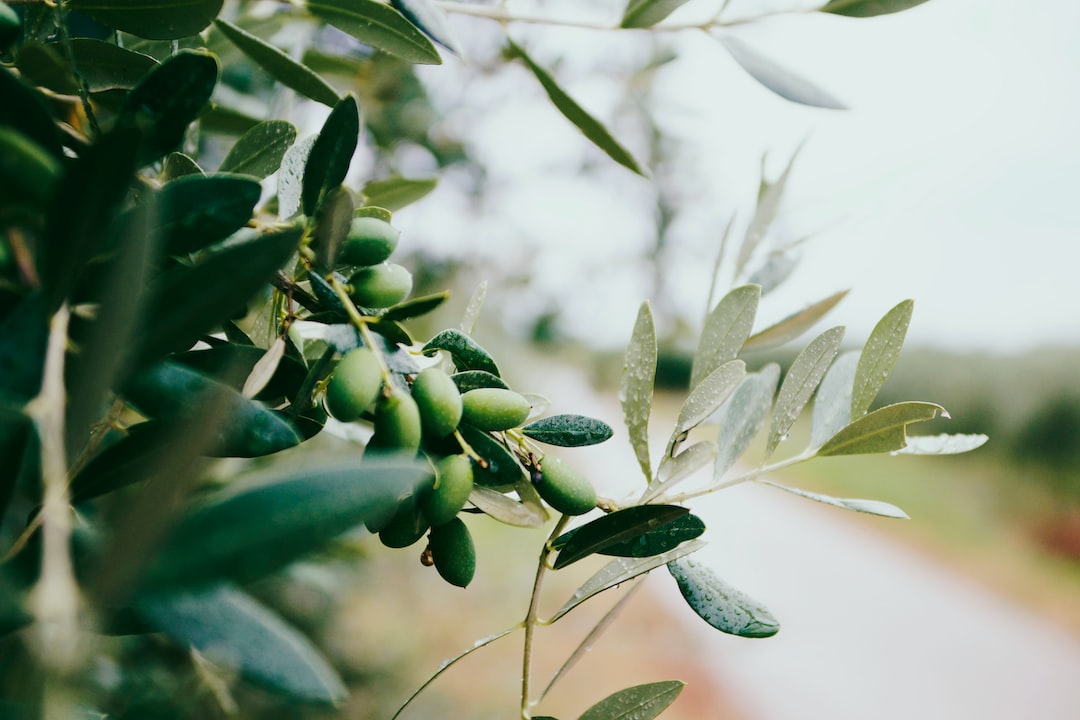Growing Your Own Olive Grove: A Guide to Growing Olive Trees from Seed

Growing an olive grove can be a rewarding and fulfilling endeavor. Olive trees not only provide a beautiful landscape, but they also offer a multitude of benefits. From the health benefits of olive oil to the economic advantages of selling olive oil, and the environmental benefits of growing olive trees, there are many reasons why growing an olive grove is a great idea. In this article, we will explore these benefits in detail and provide a step-by-step guide on how to successfully grow and maintain your own olive grove.
Key Takeaways
- Growing an olive grove is a great idea for those who want to produce their own olive oil and enjoy the beauty of the trees.
- Growing olive trees from seed has many benefits, including cost-effectiveness and genetic diversity.
- Choosing the right soil for your olive grove is crucial for the health and productivity of your trees.
- Preparing the soil for planting olive trees involves removing weeds and adding organic matter.
- Planting olive trees requires digging a hole, adding fertilizer, and watering thoroughly.
Why Growing an Olive Grove is a Great Idea
a. Health benefits of olive oil: Olive oil is known for its numerous health benefits. It is rich in monounsaturated fats, which are considered heart-healthy fats. Olive oil has been linked to a reduced risk of heart disease, stroke, and certain types of cancer. It also contains antioxidants that help protect the body against oxidative stress and inflammation. Additionally, olive oil is a key component of the Mediterranean diet, which has been associated with longevity and overall good health.
b. Economic benefits of selling olive oil: The demand for high-quality olive oil has been steadily increasing in recent years. By growing your own olive grove and producing your own olive oil, you have the opportunity to enter the lucrative market of selling this sought-after product. With proper cultivation and production techniques, you can create a profitable business or generate additional income by selling your olive oil locally or online.
c. Environmental benefits of growing olive trees: Olive trees are well-suited to arid and semi-arid climates, making them a sustainable choice for agriculture in regions with limited water resources. They are also drought-tolerant and require minimal irrigation once established. Furthermore, olive trees have deep root systems that help prevent soil erosion and improve soil structure. By growing an olive grove, you are contributing to the preservation of natural resources and promoting sustainable farming practices.
The Benefits of Growing Olive Trees from Seed
a. Cost-effective: Growing olive trees from seed is a cost-effective way to establish an olive grove. Seeds can be obtained from mature olive fruits, and with proper care and nurturing, they can germinate and grow into healthy trees. This method eliminates the need to purchase expensive saplings or young trees, saving you money in the long run.
b. Greater genetic diversity: Growing olive trees from seed allows for greater genetic diversity within your grove. Each seed has the potential to produce a unique tree with its own set of characteristics, such as fruit size, flavor, and resistance to pests and diseases. This genetic diversity can enhance the overall health and productivity of your olive grove.
c. More resilient trees: Olive trees grown from seed tend to be more resilient and adaptable to their environment. They have undergone a natural selection process, where only the strongest and most vigorous seeds germinate and survive. As a result, these trees are better equipped to withstand environmental stresses, such as drought, extreme temperatures, and pests.
Choosing the Right Soil for Your Olive Grove
| Soil Type | pH Range | Drainage | Organic Matter Content | Nutrient Availability |
|---|---|---|---|---|
| Clay | 6.0-7.5 | Poor | High | Low |
| Sandy | 6.0-8.0 | Good | Low | Low |
| Silt | 6.0-7.5 | Good | High | High |
| Loam | 6.0-7.5 | Good | High | High |
a. Ideal soil conditions for olive trees: Olive trees thrive in well-drained soils with a pH level between 6 and 8. They prefer sandy or loamy soils that are rich in organic matter. It is important to avoid heavy clay soils or soils with poor drainage, as they can lead to root rot and other issues.
b. Soil testing and analysis: Before planting your olive grove, it is recommended to conduct a soil test to assess its fertility and composition. This will help you determine if any amendments or adjustments are needed to optimize soil conditions for olive tree growth. Soil testing kits are readily available at garden centers or through agricultural extension services.
Preparing the Soil for Planting Olive Trees
a. Clearing the land: Before planting your olive trees, it is important to clear the land of any existing vegetation or debris. This can be done manually or with the help of machinery, depending on the size of your grove. Clearing the land allows for better access and visibility during the planting process.
b. Soil amendments and fertilizers: Based on the results of your soil test, you may need to amend the soil with organic matter or adjust its pH level. Common soil amendments for olive trees include compost, well-rotted manure, and bone meal. Fertilizers can also be applied to provide essential nutrients for tree growth and development.
c. Irrigation systems: Olive trees require regular watering, especially during their first few years of establishment. Installing an irrigation system, such as drip irrigation or sprinklers, can ensure that your trees receive adequate moisture without wasting water. It is important to water deeply and infrequently to encourage deep root growth.
Planting Olive Trees: Step-by-Step Guide

a. Choosing the right time to plant: The best time to plant olive trees is in the spring or fall when temperatures are mild and there is sufficient moisture in the soil. Avoid planting during extreme heat or cold, as this can stress the young trees.
b. Digging the holes: Dig a hole that is wide and deep enough to accommodate the root ball of your olive tree. The hole should be slightly larger than the container or root system of the tree. Loosen the soil at the bottom of the hole to encourage root penetration.
c. Planting the trees: Gently remove the tree from its container or carefully untangle its roots if it is bare-rooted. Place the tree in the center of the hole and backfill with soil, ensuring that the tree is planted at the same depth it was previously growing. Firmly tamp down the soil around the base of the tree to eliminate air pockets.
d. Mulching and watering: Apply a layer of organic mulch, such as wood chips or straw, around the base of the tree to conserve moisture and suppress weed growth. Water the newly planted tree thoroughly to settle the soil and provide hydration. Monitor the soil moisture regularly and water as needed.
Caring for Your Olive Grove: Watering, Fertilizing, and Pruning
a. Watering requirements: Olive trees require regular watering, especially during their first few years of establishment. They prefer deep, infrequent watering rather than frequent shallow watering. Monitor the soil moisture and water when the top few inches of soil are dry.
b. Fertilizer needs: Olive trees have relatively low nutrient requirements, but they can benefit from occasional fertilization. Apply a balanced fertilizer, such as a 10-10-10 or 14-14-14 formula, in early spring or late winter. Avoid over-fertilization, as this can lead to excessive vegetative growth and reduced fruit production.
c. Pruning techniques: Pruning is an important aspect of olive tree care, as it helps maintain tree health, shape, and productivity. Prune your olive trees during their dormant period in late winter or early spring. Remove any dead or diseased branches, as well as any crossing or crowded branches. Prune to open up the canopy and allow for better air circulation and sunlight penetration.
Common Pests and Diseases in Olive Groves and How to Prevent Them
a. Overview of common pests and diseases: Olive groves can be susceptible to various pests and diseases, including olive fruit fly, olive knot disease, and verticillium wilt. These can cause damage to the fruit, leaves, and overall health of the trees.
b. Prevention and treatment methods: To prevent pest and disease infestations in your olive grove, it is important to practice good sanitation and hygiene. Remove fallen leaves and fruit from the ground, as they can harbor pests and pathogens. Monitor your trees regularly for signs of infestation or disease and take appropriate action, such as applying organic insecticides or fungicides.
Harvesting and Processing Your Olive Crop
a. When to harvest: The timing of olive harvest depends on the desired ripeness and end use of the fruit. Olives can be harvested when they are green, turning color, or fully ripe. Green olives are typically used for pickling, while ripe olives are used for oil production.
b. Harvesting techniques: Olives can be harvested by hand or with the help of mechanical shakers. Hand harvesting is more labor-intensive but allows for greater control over the quality of the fruit. Mechanical harvesting is faster and more efficient, but it can result in a higher percentage of damaged fruit.
c. Processing methods: Once harvested, olives need to be processed to extract the oil or prepare them for pickling. This involves washing, crushing, and pressing the olives to separate the oil from the pulp and pit. The extracted oil can then be filtered and stored in clean containers.
Tips for Maintaining a Healthy and Productive Olive Grove
a. Regular maintenance tasks: Regular maintenance tasks for your olive grove include weed control, pest monitoring, and pruning. Keep the area around your trees free from weeds to reduce competition for water and nutrients. Monitor your trees for signs of pests or diseases and take appropriate action to prevent infestations. Prune your trees annually to maintain their shape and productivity.
b. Pest and disease prevention: To prevent pest and disease infestations in your olive grove, it is important to practice good sanitation and hygiene. Remove fallen leaves and fruit from the ground, as they can harbor pests and pathogens. Monitor your trees regularly for signs of infestation or disease and take appropriate action, such as applying organic insecticides or fungicides.
c. Soil management: Proper soil management is crucial for the health and productivity of your olive grove. Regularly test your soil to assess its fertility and composition. Amend the soil with organic matter or adjust its pH level as needed. Practice proper irrigation techniques to ensure that your trees receive adequate moisture without waterlogging the soil.
Enjoying the Fruits of Your Labor
In conclusion, growing an olive grove can be a rewarding and fulfilling experience. The benefits of growing an olive grove are numerous, from the health benefits of olive oil to the economic advantages of selling olive oil, and the environmental benefits of growing olive trees. By following the step-by-step guide provided in this article, you can successfully establish and maintain your own olive grove. With proper care and attention, you will soon be able to enjoy the fruits of your labor, whether it be in the form of delicious olive oil or a beautiful landscape filled with thriving olive trees. So why wait? Start your own olive grove today and reap the many rewards it has to offer.



